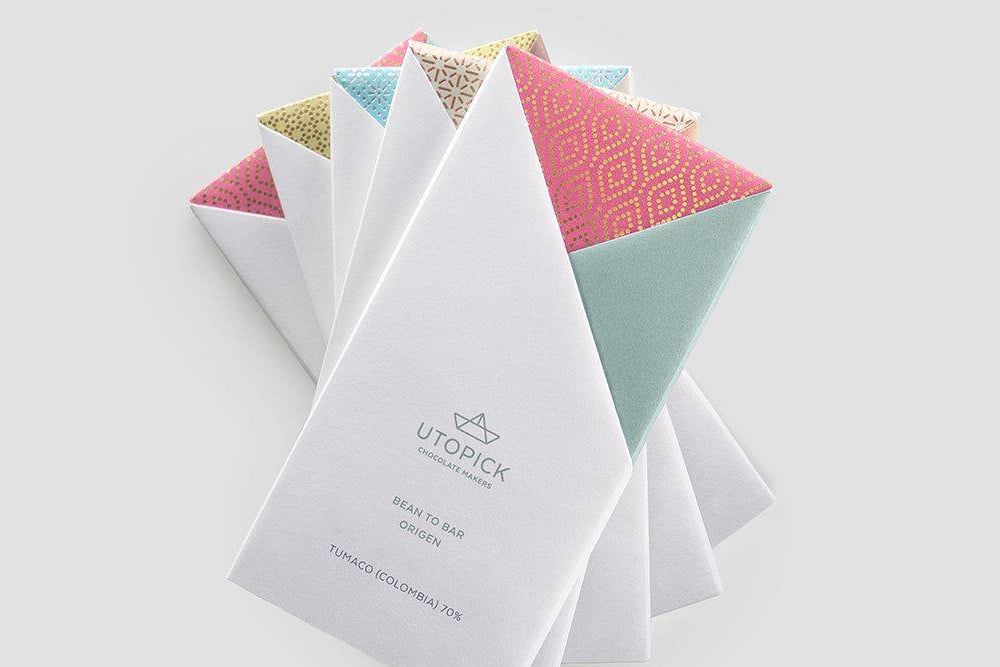3 min read
Why Packaging Design Is Just As Important As What’s Inside
By: Theresa Turner on Jan 13, 2021 2:53:46 PM

While it’s true you can’t tell a book by its cover, it’s also true that consumers will never get to judge how much they love your products unless they love the cover. That’s the central reason why aesthetically pleasing packaging deserves the same level of attention to detail as product quality. Market leaders don’t underestimate the power of a stunning design and don’t leave these critical decisions to the last minute.
One of the basics of Marketing 101 is the famous 5 P’s: Product, Price, Promotion, Placement, and People. Packaging technically falls under Product development cycle, but your choices here will also impact perceived value (Price), brand messaging (Promotion), the retailer’s preferred brands (Place), and the type of questions that your customer service agents will have to answer (People).
Here are some package design considerations that deserve to move to the front of your development timeline.
1. Keep it SMPL
The ideal product packaging should communicate four functionalities silently and immediately. That’s every bit as hard as it sounds, but experienced designers do it every day. The four functions are:
- Sales conversion – Call out to the consumer to touch, inspect, & purchase the product.
- Messaging – Broadcast the brand’s central themes and missions, verbally and visually.
- Practicality – Make it easy to open, close, ship, store, and dispose of the package.
- Logistics – Display info such as contact numbers, mandatory labeling, preparation, & more.
Simple, right?
The secret is in crafting materials that perform multiple tasks. For example, the image should grab attention for sales, convey a mood for messaging, and be completely unique for practicality. Required preparation suggestions for food or application directions for fragrance and beauty products should use language consistent with the emotion you want to evoke with the customer. These are elemental questions but they can change as the product evolves, so keep your product and design teams in alignment.
2. Build utility into the container itself
Consider how the construction of the package itself could add value to the product. Cosmetics and beauty supplies are very popular ecommerce options because they run out frequently and are essential to the customer’s sense of self. Think of how the package design could make it easier for fulfillment services to handle storage and shipping. Ecommerce platforms like Amazon give preference to brands with product packaging materials and shapes that are easy to pack and resilient for shipping. This same logic applies to how easy it is for the customer to reseal the package after opening it and whether it can be easily transported in a purse or briefcase.
3. Offer the customer a badge of honor
Overall, 21st century commerce has been defined by movement away from commitment to individual products toward buying into entire brand ecosystems. Apple sells not just phones and computers, but apps, music, movies, headphones, TVs with their own channels, and soon connected cars. Your packaging design can create that kind of cohesive ecosystem where the individual product doesn’t matter as much as the fact that your business provided it. Review your packaging to see if it can answer questions like:
- How would you describe a typical buyer persona?
- What specialized knowledge do you need to use this product properly?
- What does the supply chain reveal about the company’s values and mission?
- Which products complement this product well?
- How will this product or the brand ecosystem improve the lives of customers?
This is just the beginning, but it indicates the types of questions that will help your packaging designers think like the customer.
4. Practice precision labeling
Achieving excellence in package labeling is a fine art. It requires the same kind of attention to detail demonstrated by artisans who pack gears into tiny watches or a wood carvers who craft puzzle boxes. You have the same reporting requirements as everyone else, but you must stand out against a sea of choices on retail shelves. Know your customer and know the value your brand brings to them. All design decisions flow from there.
5. Start from the end and work backwards
Each industry has its own requirements and challenges. A good example is in the Supplements sector, which falls under the jurisdiction of several oversight bodies, some of which have conflicting requirements. As you prepare to present facts about supplement ingredients and their nutritive value, make sure you comply with FDA guidelines around what customers should expect. If the amount of information you need to convey exceeds the space the label affords, consider how an additional sheet will impact the customer experience and what it would mean if the customer never looked at that sheet.
Experience by Design
The main takeaway here is that Packaging deserves a spot inside the 5 P’s of successful marketing. In fact, packaging design deserves its own special categories under all five of them – Product, Price, Promotion, Placement, and People. Put the customer experience at the beginning of your development process, you will see the power of packaging from the customer’s perspective. The packaging is the first impression and the first promise you make to your customer. All you have to do at that point is fulfill the promise with a great product to establish the basis for a long term relationship.
Related Posts
What is Design Thinking?
Design thinking applies the elements and processes developed over centuries of creative design work...
Go with the Pros: 6 Reasons Why Pro Website Designers Are Worth It
It’s hard to imagine running a modern business that does not have an online presence. After all,...
Top 5 ways startups can use design to gain market share
Startups have to walk a fine line. While they’re inherently innovative and forward-looking, they...
